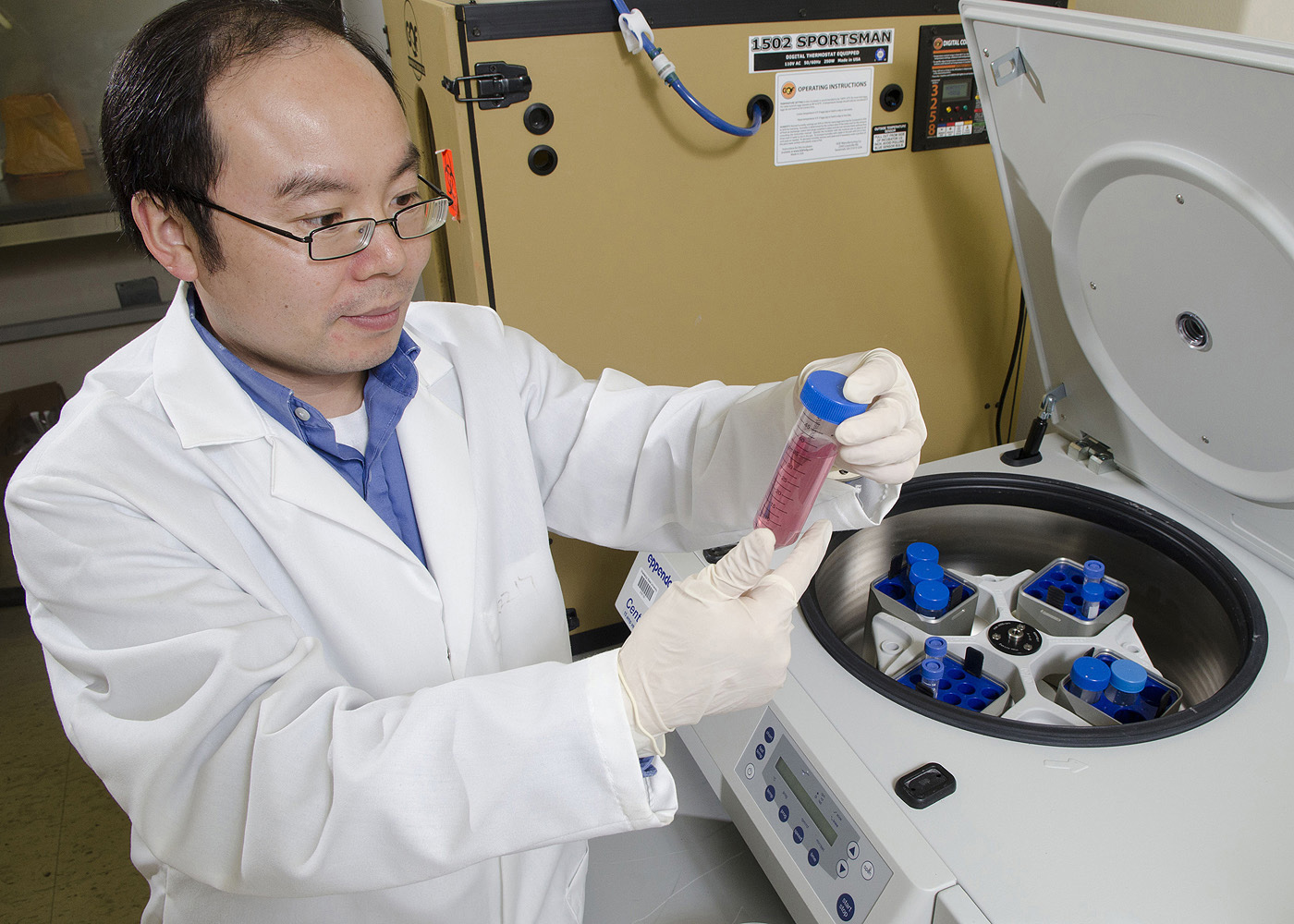Contact: Karen Templeton

STARKVILLE, Miss.--Seasonal flu causes approximately 24,000 deaths and more than 200,000 hospitalizations in the United States each year, and a researcher at the Mississippi State University College of Veterinary Medicine is aiming to improve the system for developing life-saving flu vaccines.
Flu viruses change from season to season, and mutations in flu viruses' proteins cause the viruses to change and go through a process called antigenic drift. Once the viruses' hosts (animals and humans) develop immunities to certain strains of a flu virus, the virus changes. Because of this constant fluctuation in viruses, scientists constantly monitor the movement and mutations in viruses to best develop vaccines. This is an expensive and time-consuming process.
Henry Wan, associate professor at MSU's College of Veterinary Medicine, and his colleagues recently published a study in mBio, an American Society of Microbiology publication, that outlines a possibly more efficient and cost-effective way to develop flu vaccines.
The study "Using Sequencing Data to Infer the Antigenicity of Influenza Virus" outlines the use of a computerized system to provide a visual of the distance between antigens, the substances that cause antibody production in response to different viruses. Wan's system, called AntigenMap, sounds complicated, but it offers a clear visual of flu viruses over time and populations.
"For our study, we looked specifically at the H3N2 influenza virus," Wan said. "The H3N2 virus vaccine was updated more than 27 times since 1968 and has been of concern, as it is found in swine and human populations with some evidence of viruses being transmitted at county fairs."
Wan and his colleagues entered the antigenic characteristics of the virus. The data was translated into mathematical formulas that provided an in-depth look at the virus over time and in populations.
"Our resulting map showed us how in the late 1960s, people were affected by the virus and then in later years, transferred it to swine populations," Wan said. "Over time, it moved back to humans but older people were not as affected because they had built up immunity from when the virus circulated in humans originally. However, young adults and children were more susceptible. We saw this same thing with the H1N1 outbreak of 2009."
Determining what seasonal flu viruses to vaccinate against is a long, laborious process that depends on samples analyzed at laboratories around the world. Each year, thousands of scientists in about 136 influenza centers in 106 countries, along with numerous vaccine companies and surveillance programs, generate data to develop influenza vaccines. The vaccines developed through this process are generally effective and are considered the world's best defense against the flu. Currently, scientists are determining what viruses to vaccinate against for Northern Hemisphere populations.
"With our computerized model, we cut down on laboratory error and the expense of involving researchers around the world," Wan said. "Our goal is to get vaccine strain selection quickly, especially in the case of pandemic influenza. AntigenMap is going to allow us to do that."